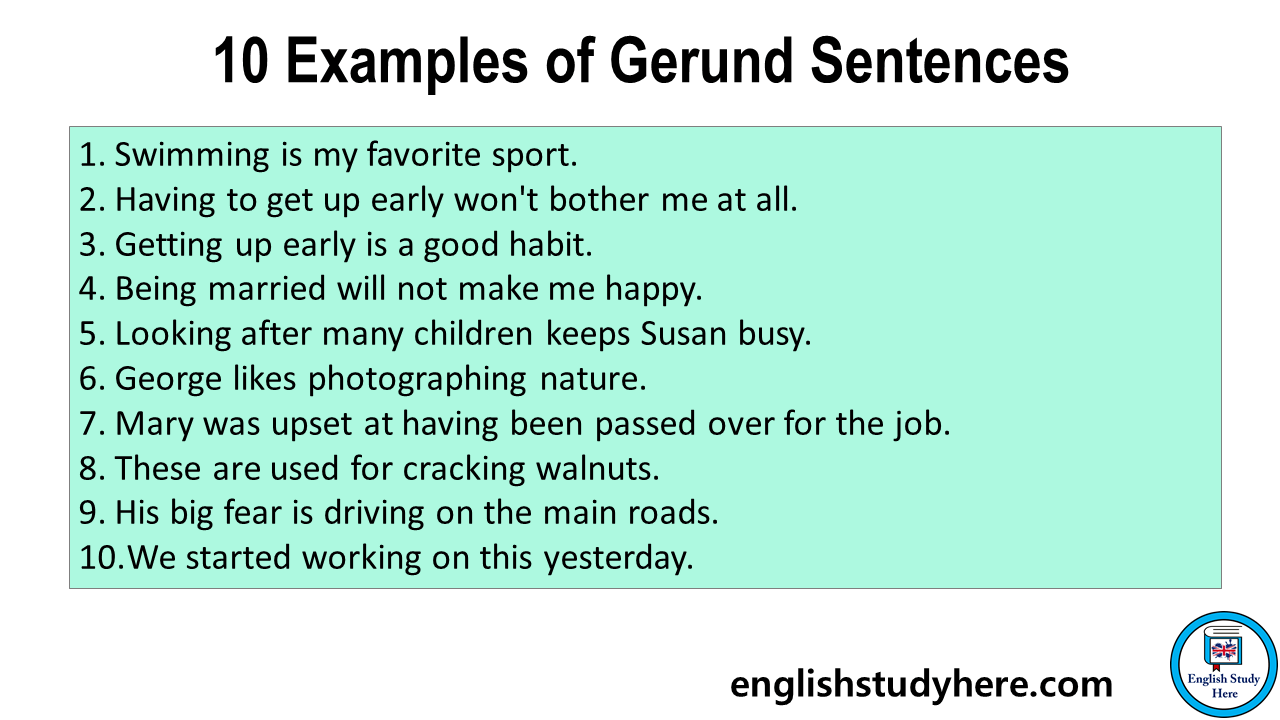Gerunds are verbs that act as nouns in a sentence by ending in -ing. They can be used in various ways to add depth and meaning to a sentence. Let’s explore some examples of gerunds in sentences.
Gerunds can be used as the subject of a sentence, such as “Swimming is my favorite hobby.” In this case, “swimming” is the gerund that acts as the subject of the sentence, indicating the action or activity that is being discussed.
Examples of Gerunds in Sentences:
1. Running every morning helps me stay fit.
2. I enjoy dancing in the rain.
3. She is considering taking up painting as a hobby.
4. Cooking is a passion of mine.
5. His constant complaining is starting to annoy me.
Gerunds can also be used after prepositions, such as “I am good at singing.” Here, “singing” is the gerund that follows the preposition “at” and acts as the object of the preposition.
Additionally, gerunds can be used after certain verbs, such as “I love swimming.” In this sentence, “swimming” is the gerund that follows the verb “love” and acts as the direct object of the verb.
In conclusion, gerunds are versatile parts of speech that can add depth and clarity to sentences. By understanding how to use gerunds effectively, you can improve the quality of your writing and communication. Practice using gerunds in different contexts to enhance your language skills and express yourself more effectively.
